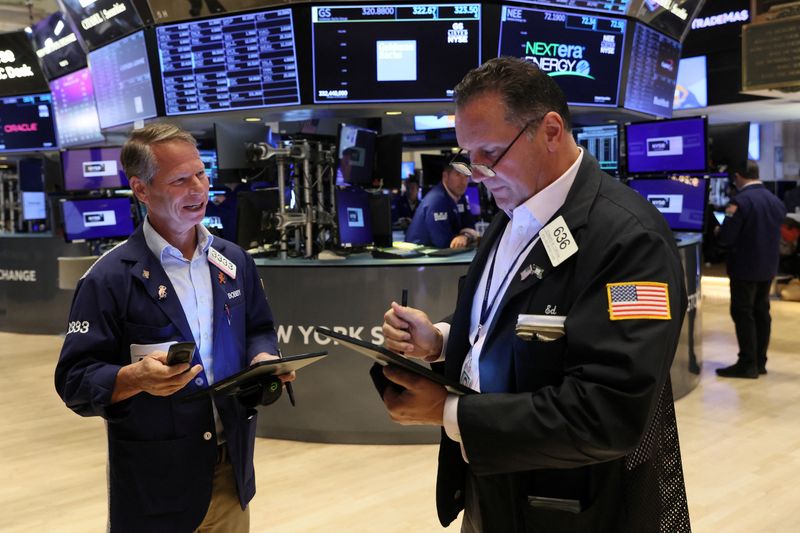Stock market today: Nasdaq closes above 23,000 for first time as tech rebounds
Investing.com -- Stocks have a more supportive backdrop thanks to upbeat US economic data, the potential impact of recent Chinese stimulus measures, and the prospect of global interest rate reductions, according to analysts at UBS.
Recent figures out of the US suggest that the Federal Reserve may be on track to achieve a so-called "no landing" scenario, in which economic activity remains resilient after a period of elevated rates aimed at quelling inflation.
Nonfarm payrolls data out of the US picked up in September, while recent revisions to gross domestic product readings show that growth has averaged 2.5% per year since 2019. The pace of price rises are also cooling closer to the Fed's stated 2% target.
Elsewhere, Chinese officials have rolled out a string of stimulus measures designed to reinvigorate sluggishness in the world's second-largest economy, although markets remain hopeful Beijing will introduce even more forceful aid.
China's central bank, along with other policymakers around the world, have begun to slash borrowing costs, sparking expectations for a global easing cycle. At its last meeting in September, the Fed announced an outsized 50 basis points cut and the European Central Bank has now drawn down rates at back-to-back gatherings.
With these trends in mind, the UBS analysts said there are particular opportunities in US technology groups, arguing these names remain the best way to benefit from a surge in enthusiasm around artificial intelligence. Earnings growth in the US is "broadening," however, they noted.
"We believe the environment remains constructive for US equities," the UBS analysts said in a note to clients.
Asian companies outside of Japan and European small- and mid-cap equities also offer near-term benefits, they added.
"We [...] believe Asia ex-Japan stocks can deliver low- to mid-teens earnings growth in US dollars next year, one of the highest growth rates globally. And we expect a reversal of the 19% underperformance of European small- and mid-caps compared to large caps over the past three years as interest rates fall, refinancing costs decline, and growth uncertainty eases into next year."
